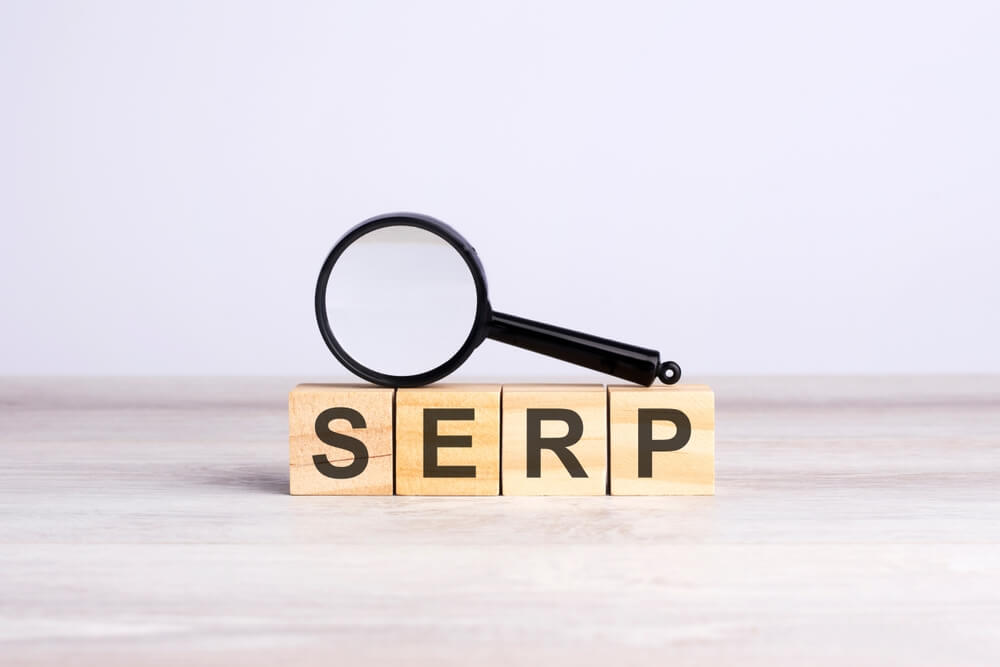
Quick Guide for the Perplexed to All Kinds of SERPs Features
Unless you work at an SEO agency, the mechanisms powering search engine results pages (SERPs) are most likely a mystery. Distinguishing between regular snippets, rich snippets (now called rich results), and featured snippets might as well be an exercise in splitting hairs.
Not to say that it is futile or meaningless to know, but it can often get complicated for beginners.
This guide provides a general overview of the many SERP features available today, including:
- A brief timeline of Google SERP evolution
- Five Google SERP features to optimize for
There’s a lot to discuss, so get ready to take notes.
Let’s go!
Want to learn more about the Digital Authority Partners approach to SEO? Watch this video!
Evolution of SERPs: From Organic Results to Zero-Click Search
SERPs are where you see the fruits of your search engine optimization (SEO) labor, and they often change. You must familiarize yourself with some of the current features on Google because the slightest changes to them cause shifts in SEO trends that affect ranking.
Two broad categories of results (not features) appear on SERP: organic and paid results. The former refers to anything that ranks purely due to exceptional SEO, while the latter is a means to give your ranking a temporary artificial boost based on your budget.
Since Google is by far the most developed search engine in use today, especially for SERP features, the discussions below primarily revolve around them. Before we move on to talk about the features themselves, though, let us take a look at ten significant developments in SERP history:
Ten Major Milestones in Google Search History
| 1998: | Google officially launches as a search engine platform, competing with Yahoo! |
| 2000: | Google AdWords begins service, allowing users to display paid results. |
| 2004: | Local results appear on SERPs as part of the newly-launched Google Local. |
| 2005: | Google integrates images, videos, and news results into the main SERP feed. |
| 2008: | The auto-complete feature, Google Suggest, starts showing related searches. |
| 2012: | Google introduces the Knowledge Graph and Knowledge Panel features on SERP. |
| 2013: | - The Google Carousel appears, allowing users to review multiple images quickly. - Detailed local results, the predecessor of Local Packs, start appearing on Google. - Quick Answers, eventually rebranded as "featured snippets," started appearing. |
| 2018: | Video carousels become available on Google’s main SERP feed for the first time. |
5 Most Important Google SERP Features

The Knowledge Panel is perhaps the most easily recognizable SERP feature because it takes up massive real estate on the pages where it appears. Apart from that, the context in which it shows up helps make it stand out — providing an objective answer to a straightforward question.
If you want to see what it looks like for yourself, try these search terms in Google: “grand canyon depth,” “Coney Island,” or “how long is the Vegas Strip.” The Knowledge Panels are the large-font informational texts at the top of the SERP for the first two and the text box on the right of the latter.
This illustrates that SERP features vary within and among themselves and the keywords that trigger them. Given that, below are the top five most critical SERP features everyone needs to consider in their website strategy. Some are even rooted in the best SEO practices for ranking.
1. Featured Snippets: Displaying the Best Content
Ranking as a featured snippet, the top snippet on SERPs, gives any website a massive boost in lead attraction and conversion potential. Being the first and preferred choice for users allows you to automatically draw the lion’s share of clicks without much added effort.
The caveat is that Google randomly selects featured snippets from its vast library of indexed content. You have zero influence over it, meaning fit and content quality are the deciding factors.
2. People Also Ask: Where Runner Ups Shine
Not all highly relevant results are fortunate enough to become the top featured snippet, so other worthwhile content appears in "People Also Ask" instead, which boosts SERPs.
For example, "People Also Ask" results for “Is it cheaper to book multi-city flights?” include:
- What's the best and cheapest way to book a flight?
- What is the difference between multi-city and round trips?
3. Related Searches: Win Traffic with Keywords
Google’s search engine algorithms cannot be too picky when matching search queries with indexed content. Otherwise, they would end up with nothing relevant to show users. Instead, they need (and have) to be proactive in connecting people with a broad selection.
The related search features at the bottom of Google SERPs make highly relevant broad-match keyword suggestions. Users can click on any of them to broaden or narrow their search.
4. SERP Packs: Maximize Your Online Visibility
If you have been on Google in recent years, you might have seen just how many options now exist. Indeed, there are so many that Google groups them by type (packs) for ease, such as:
- Image Pack: This cluster of Google Images results appears on the main SERP.
- Local Pack: A group of three local search results within a specified area or vicinity.
- Teaser Pack: An upgraded form of local packs displaying added business information.
5. Shopping Results: A Free Way to Advertise
Finally, we have the shopping results, essentially a way for Google to suggest items (or push products however you want to see it) whenever it detects transactional search intent. The suggestions come from Google’s Free Listings service in its Merchant Center platform.
Your ability to use this feature is subject to additional guidelines. However, getting more items from your website to show up on SERPs remains an amazing and viable option.
Summing Up
SERPs have come a long way since the dawn of the internet, from minimalist pages filled with organic search results to the bustling marketplace of content that it is today. New features also arrive now and then, adding to the growing list of SEO concerns website owners maintain.
Although each one serves a specific purpose, it is not optimal for all businesses or industries. Take the Knowledge Panel, for example, which comes from objective, public information. Its purpose is to make accessing such information easier (i.e., the Grand Canyon’s depth, etc.).
Need help understanding the different SERP features and how they work? Contact us today to learn more.
Want To Meet Our Expert Team?
Book a meeting directly here




